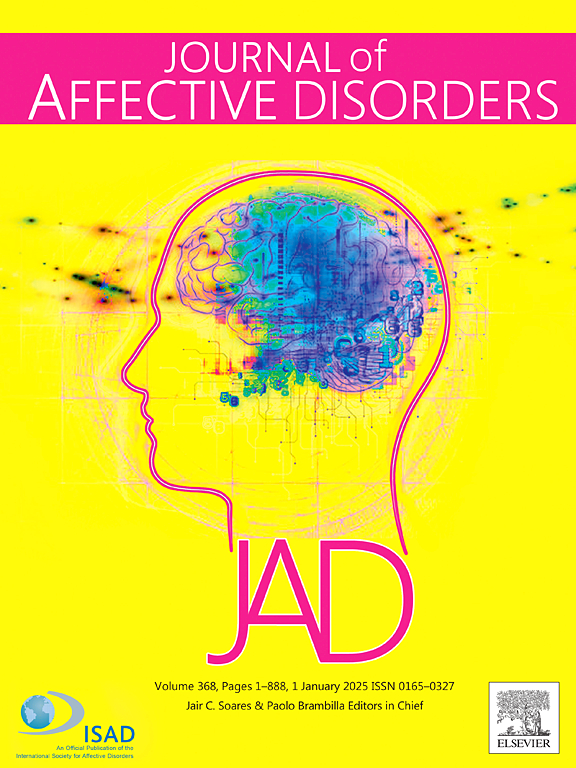Multi-omics reveal the role of nociception-related genes TNXB, CTNND1 and CBL in depression
IF 4.9
2区 医学
Q1 CLINICAL NEUROLOGY
引用次数: 0
Abstract
Background
Recent studies have suggested a link between nociception and depression. However, the specific genes involved remain unclear.
Methods
This study investigates this genetic link using multi-omics data. We collected nociception-related genes from the GeneCards database and integrated quantitative trait loci (mQTLs, eQTLs and pQTLs) data for gene expression, DNA methylation and protein expression. GWAS data from the IEU database served as the discovery cohort for depression, with FinnGen and GWAS Catalog data used for validation. Summary data-based Mendelian Randomization (SMR) analysis was employed to examine the interactions between nociception-related genes and depression, and colocalization analysis identified shared causal variants. The associations between depression and target gene expression in specific tissues and specific cell types were assessed using the GTEx v8 dataset and single-cell eQTL data.
Results
SMR analysis revealed 215 mQTLs, 12 eQTLs, and 1 pQTL associated with depression in the discovery cohort. By integrating multi-omics evidence, we found that the hypermethylation of the TNXB gene (cg02272968, cg02432444, cg27624229) and the hypomethylation of the CTNND1 gene (cg16127573) and the P2RY6 gene (cg12889420) were found to upregulate their expression, potentially increasing the risk of depression. GTEx eQTL analysis confirmed CBL expression in the substantia nigra positively correlates with depression risk. However, none of the key genes were confirmed in the single-cell eQTL analysis.
Conclusions
Our study emphasizes the importance of nociception-related genes, particularly TNXB, CTNND1 and CBL in the pathogenesis of depression. Future research should build on these findings for potential prevention and treatment strategies.
多组学揭示痛觉相关基因 TNXB、CTNND1 和 CBL 在抑郁症中的作用
最近的研究表明,痛觉和抑郁之间存在联系。然而,涉及的具体基因仍不清楚。方法利用多组学数据对这一遗传联系进行研究。我们从GeneCards数据库中收集了痛觉相关基因,并整合了数量性状位点(mqtl、eQTLs和pQTLs)的基因表达、DNA甲基化和蛋白表达数据。来自IEU数据库的GWAS数据作为抑郁症的发现队列,使用FinnGen和GWAS目录数据进行验证。采用基于汇总数据的孟德尔随机化(SMR)分析来检验伤害感受相关基因与抑郁症之间的相互作用,共定位分析确定了共同的因果变异。使用GTEx v8数据集和单细胞eQTL数据评估特定组织和特定细胞类型中抑郁症与靶基因表达之间的关系。结果smr分析发现215个mqtl、12个eqtl和1个pQTL与抑郁症相关。通过整合多组学证据,我们发现TNXB基因(cg02272968、cg02432444、cg27624229)的高甲基化以及CTNND1基因(cg16127573)和P2RY6基因(cg12889420)的低甲基化上调了它们的表达,潜在地增加了抑郁症的风险。GTEx - eQTL分析证实,CBL在黑质中的表达与抑郁风险呈正相关。然而,没有一个关键基因在单细胞eQTL分析中得到证实。结论本研究强调了痛觉相关基因,特别是TNXB、CTNND1和CBL在抑郁症发病机制中的重要作用。未来的研究应以这些发现为基础,制定潜在的预防和治疗策略。
本文章由计算机程序翻译,如有差异,请以英文原文为准。
求助全文
约1分钟内获得全文
求助全文
来源期刊

Journal of affective disorders
医学-精神病学
CiteScore
10.90
自引率
6.10%
发文量
1319
审稿时长
9.3 weeks
期刊介绍:
The Journal of Affective Disorders publishes papers concerned with affective disorders in the widest sense: depression, mania, mood spectrum, emotions and personality, anxiety and stress. It is interdisciplinary and aims to bring together different approaches for a diverse readership. Top quality papers will be accepted dealing with any aspect of affective disorders, including neuroimaging, cognitive neurosciences, genetics, molecular biology, experimental and clinical neurosciences, pharmacology, neuroimmunoendocrinology, intervention and treatment trials.
 求助内容:
求助内容: 应助结果提醒方式:
应助结果提醒方式:


